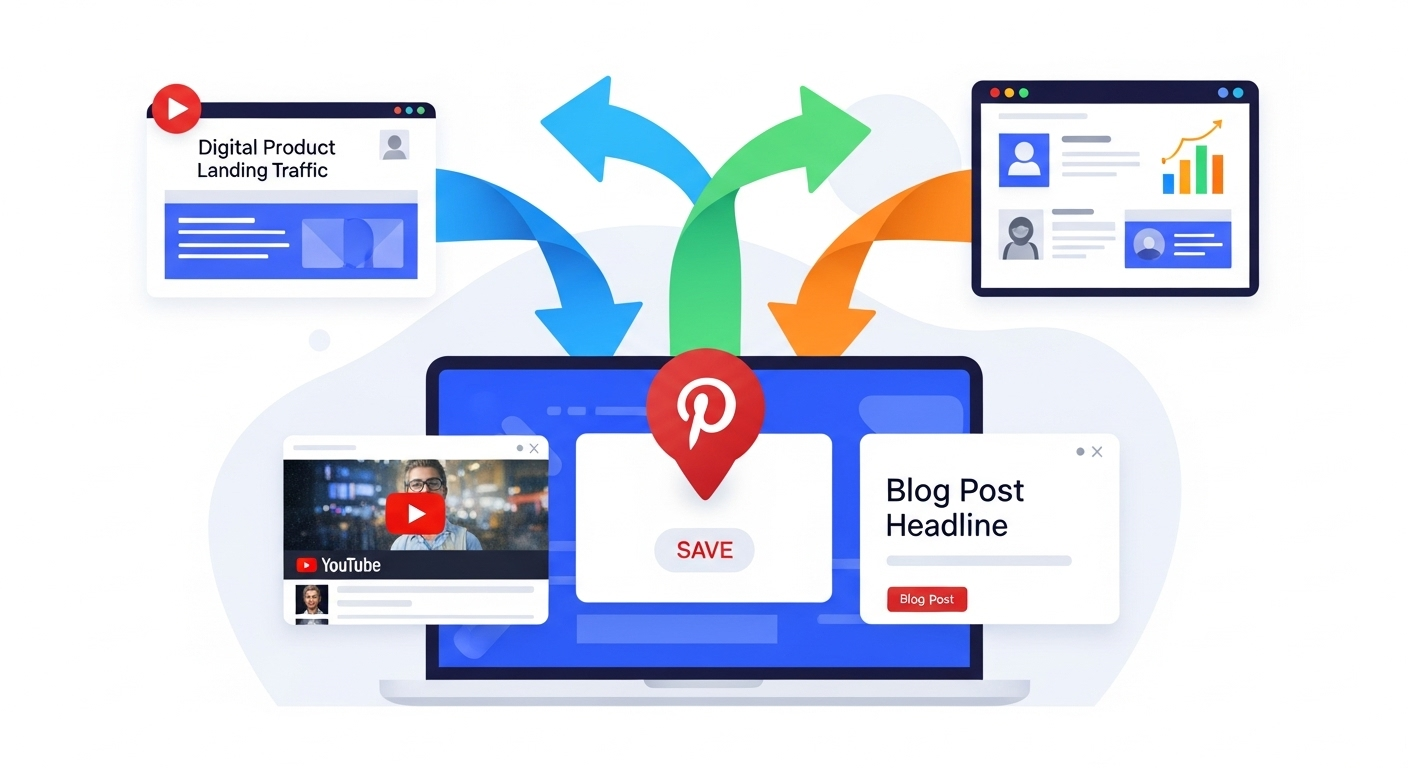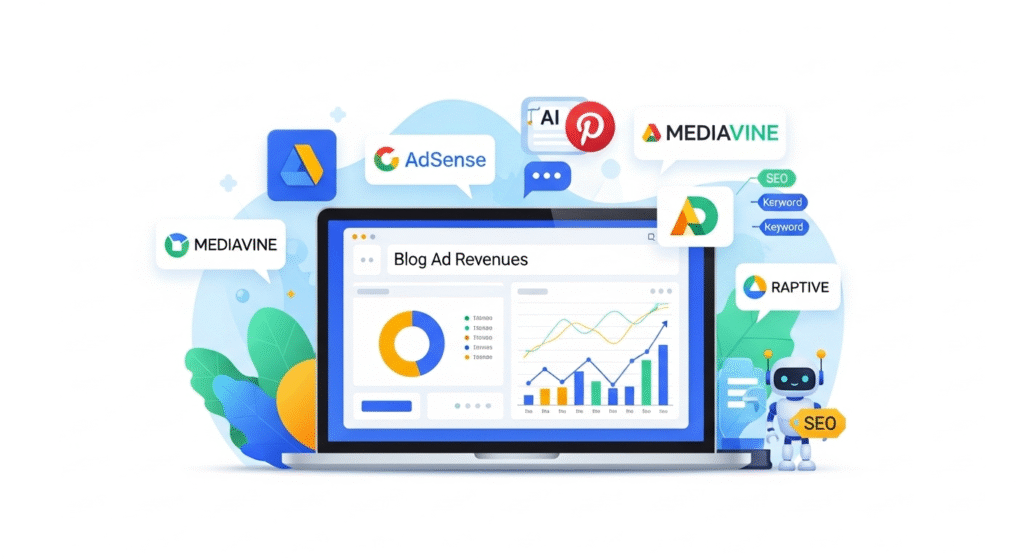
Let’s be real: the idea of posting on Instagram or TikTok every single day to grow your online business sounds exhausting. I’ve been there, staring at my screen, wondering how to get people to find my digital product without chaining myself to a never-ending content treadmill. If you’re building a business on the side—maybe while juggling a job, family, or just life in general—you don’t have time to keep up with algorithms that demand constant attention. The good news? You don’t need to. There’s a smarter way to drive evergreen traffic to your digital product that keeps working long after you hit publish.
In this article, I’m sharing a strategy to attract consistent, long-term traffic to your digital product system without relying on daily social media posts. Drawing from my own experience and backed by insights from digital marketing experts, I’ll break down how to leverage search-driven platforms like YouTube, Pinterest, and blogs to grow your online business sustainably. Whether you’re selling digital templates, courses, or software tools, these methods will help you reach your audience without burning out. Let’s dive in!
Why Evergreen Traffic Matters for Your Digital Product
Evergreen traffic refers to content that continues to attract visitors days, weeks, or even years after you create it. Unlike the fleeting posts on Instagram or TikTok, which disappear from feeds within 24-48 hours, evergreen content lives on search-driven platforms where people actively look for solutions. According to a study by Ahrefs, evergreen content can account for up to 80% of a website’s traffic over time, making it a game-changer for entrepreneurs who want results without constant hustle.
When I first started my online business, I fell into the trap of posting daily on Instagram, hoping to crack the algorithm. Spoiler: it didn’t work. After months of effort, I had barely 200 followers and zero sales. That’s when I discovered search-driven platforms. By focusing on YouTube and Pinterest, I grew my email list to over 500 subscribers in just four months, with steady traffic flowing to my digital product. Here’s how you can do it too.
Scroll vs. Search: Understanding the Platform Divide
Not all platforms are created equal when it comes to driving traffic. Let’s break down the difference between scroll-based and search-based platforms to help you choose the right one for your digital product.
Scroll-Based Platforms: Instagram and TikTok
- Instagram: A fast-moving feed that thrives on consistency and trends. It’s great for nurturing an existing audience but tough for discovery if you’re starting from scratch. Posts typically lose visibility within a day.
- TikTok: Perfect for viral, short-form storytelling, but its hit-or-miss nature makes it unreliable for consistent traffic. One video might get 5,000 views, while the next gets 50.
These platforms are built for the scroll, rewarding frequent posting and engagement. They’re fantastic for building community once people know you, but they’re not ideal for sustainable, long-term traffic.
Search-Based Platforms: YouTube, Pinterest, and Blogs
- YouTube: The world’s second-largest search engine, YouTube is where people go to learn and solve problems. Videos can rank in Google, offering unmatched discoverability. A Google study found that 68% of users watch YouTube to help solve a problem or learn something new.
- Pinterest: A visual search engine where users actively seek ideas and products. It’s ideal for digital products like templates, planners, or tutorials. Pinterest drives over 600 million searches monthly, according to Pinterest Business.
- Blogs: Written content optimized for SEO can rank on Google for years, driving steady traffic. Blogs take longer to gain traction but offer long-term rewards with minimal upkeep.
Search-based platforms are designed for intent-driven audiences—people actively looking for what you offer. Your job is to create content that matches their search queries.
How to Choose the Right Platform for Your Digital Product
With so many options, it’s tempting to try everything at once. Don’t. Pick one platform that aligns with your strengths and your audience’s behavior. Here’s a quick guide to help you decide:
| Platform | Best For | Content Type | Time to Results |
|---|---|---|---|
| YouTube | Teaching, storytelling, building trust | Long-form videos, tutorials | 1-3 months |
| Visual products, design-focused niches | Infographics, product mockups, quote graphics | 1-2 months | |
| Blogging | SEO-driven content, in-depth guides | Articles, how-to guides | 3-6 months |
YouTube: Teach and Build Trust
If you enjoy talking or teaching, YouTube is your platform. You don’t need fancy equipment—just a smartphone and a clear message. Create videos that solve specific problems your audience faces. For example, if you sell a coding course, make a video titled “How to Debug Python Code in 10 Minutes.” Include a call-to-action linking to your product or a free resource to capture leads.
Pinterest: Visual Appeal for Products
Pinterest is a goldmine for visual niches. If you sell digital templates or planners, create eye-catching pins with mockups or before-and-after visuals. For instance, a pin titled “5 Planner Templates to Organize Your Freelance Business” can drive clicks for months. Use tools like Canva to design professional pins quickly.
Blogging: SEO for Long-Term Wins
If writing is your strength, blogging is a powerful way to attract traffic. Focus on SEO-optimized articles that answer your audience’s questions. For example, a blog post titled “How to Create a Digital Product with AI Tools” could rank for years if optimized with tools like SEMrush or Ahrefs. Be patient—blogs take time but deliver lasting results.
My Strategy: One Piece of Content, Endless Traffic
Here’s the exact strategy I use to drive evergreen traffic to my digital product, a productivity app for freelancers. Every week, I publish one YouTube video addressing a pain point my audience faces, like “How to Manage Client Projects Without Losing Your Mind.” Each video includes:
- A clear solution: I teach a practical tip or strategy.
- A call-to-action: I link to a free checklist or demo of my app, funneling viewers into my email list.
- SEO optimization: I use keyword research tools to target phrases my audience searches for, like “freelancer productivity tools.”
This single piece of content works for months because it’s discoverable on YouTube and Google. For example, one video I posted six months ago still brings in 50-100 views weekly, with 10% of viewers clicking through to my product page.
Common Mistakes to Avoid
Building evergreen traffic isn’t instant, but avoiding these pitfalls will save you time:
- Spreading yourself too thin: Focus on one platform to start. Trying to master YouTube, Pinterest, and blogging simultaneously leads to burnout.
- Ignoring SEO: Use keyword tools to ensure your content matches what your audience searches for. A Backlinko study found that 91% of content gets zero traffic from Google due to poor SEO.
- No clear CTA: Every piece of content should guide viewers to the next step, whether it’s signing up for your email list or checking out your product.
Real-World Example: From Zero to 1,000 Subscribers
When I switched from Instagram to YouTube, I was skeptical. But after posting one video a week for three months, I went from zero to 1,000 subscribers. My secret? I focused on solving specific problems, like “How to Use AI to Create Digital Products Faster.” Each video linked to a free AI tool guide, which grew my email list and led to my first product sales. This approach works because it aligns with what my audience is already searching for.
Conclusion: Build a System That Works for You
Driving evergreen traffic to your digital product doesn’t require daily posts or chasing algorithms. By focusing on search-driven platforms like YouTube, Pinterest, or blogging, you can create content that works for you long-term, freeing up your time to focus on what matters—building your business. Pick one platform, create valuable content, and optimize it for search. You’ll be amazed at how quickly your traffic grows without the daily grind.
What’s your next step? Choose one platform and create your first piece of evergreen content this week. If you’re stuck, comment below with your niche or the problem you’re solving—I’d love to help! For more tips on building a passive income system, check out my guide on creating a digital product in one weekend. Let’s build a business that fits your life, not the other way around!
